Fat Transfer in Mexicali
Search and Compare the Best Clinics and Doctors at the Lowest Prices for Fat Transfer in Mexicali
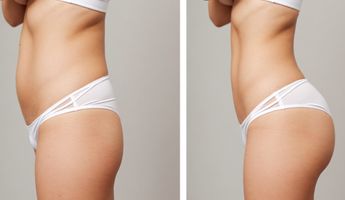
Find the best clinics for Fat Transfer in Mexicali
With Medijump you can browse 3 facilities offering Fat Transfer procedures in Mexicali. The cheapest price available is $439 in Mexicali
Fat Transfer in Mexico
Price: $ 439
Fat Transfer in Mexicali
Price: $ 439
Fat Transfer in Cancun
Price: $ 1,314
Thailand offers the best prices Worldwide
Price: $ 167
From 69 verified reviews
María del refugio Ponce, 01 March 2022
The doctors and nurses are very attentive to the patient but those who are at the entrance do not give information to the family and do not let anyone in
From 4 verified reviews
Fabiola DeVries, 17 September 2020
I cannot express enough how happy I am to have found Dr. Aceves. I recommend him to all my friends and family who have expressed interest in plastic surgery.
Hispano Americano Hospital, can be found in Cto Brasil, Mexicali, Mexico and offers its patients Fat Transfer procedures as well as 54 other procedures, across 10 different procedure categories. At present, there is no pricing information for Fat Transfer procedures at Hispano Americano Hospital. The pricing information is quite specialised, so it's only available on request, and the average price is around $2,079. Many medical professionals work at the Hospital, with 7 in total, and Hispano Americano Hospital has several accreditations, including: CMCOM - Consejo Mexicano de Cirugía Oral y MaxilofacialAMCC - Academia Mexicana de Cirugia CosmeticaAMCE - Asociación Mexicana de Cirugía LaparoscópicaAMCG - Asociación Mexicana de Cirugía GeneralAMCPER - Asociación Mexicana de Cirugía Plástica, Estética y ReconstructivaCMCOEM - Colegio Mexicano de la Cirugía de Obesidad y Enfermedades MetabólicasCMCPER - Consejo Mexicano de Cirugía Plástica, Estética y ReconstructivaCMGO - Consejo Mexicano de Ginecología y ObstetriciaCMOT - Consejo Mexicano de Ortopedia y TraumatologíaCMU - Colegio Mexicano de UrologíaCNCPER - Colegio Noreste de Cirugía Plástica Estética y Reconstructiva
Compare Before & After Photos of _procedure_photos.phpFat Transfer


Front view
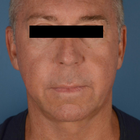
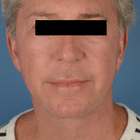
Front view
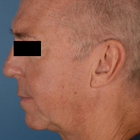
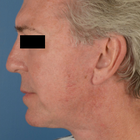
Full-side view
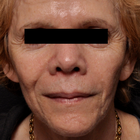
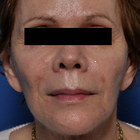
Front view
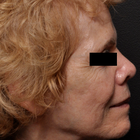
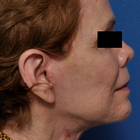
Full-side view
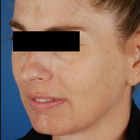

Half-side view
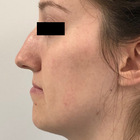
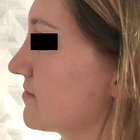
Full-side view
WHY US?
At Medijump, we're making medical easy. You can search, compare, discuss, and book your medical all in one place. We open the door to the best medical providers worldwide, saving you time and energy along the way, and it's all for FREE, no hidden fees, and no price markups guaranteed. So what are you waiting for?

Free

Best Price

Widest Selection

Risk-Free
What you need to know about Fat Transfer in Mexicali
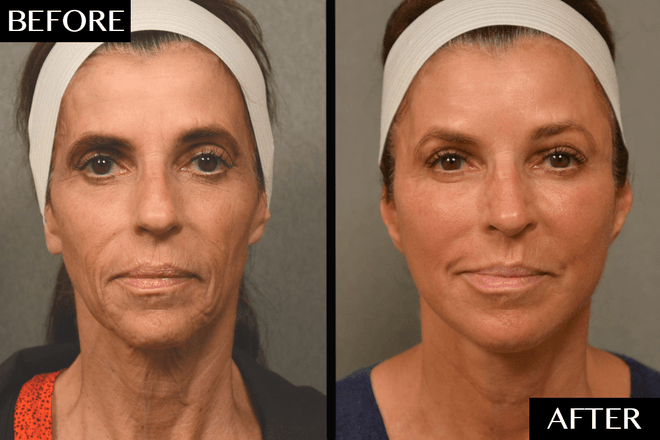
Also known as Fat Harvesting, Fat Grafting, Fat Injections, Lipofilling, Fat Transfer is a cosmetic surgery involving the movement of fat from one part of the body to another. During this procedure, your own fat will be used to fill in irregularities and grooves, primarily in the face, around the temples, eyes, chin, and lips. It can also be used to enhance the appearance of the breast, feet, hips, buttocks, and hands. The procedure is now a well-established technique that was perfected in the early nineties.
Some of the most common aesthetic indications for undergoing fat transfer / lipofilling include sunken cheeks, the disappearance of fat from the cheekbones, deep grooves running from the nose to the corners of the mouth, and in some instances of lines between the lower eyelids and the cheek. It is also one of the most common methods used for lip enhancement. In addition, lipofilling can be used to smooth out all types of irregularities such as those resulting from poorly performed liposuction or injuries.
The necessary fat is obtained by a limited liposculpture through one or several 3 to 5 mm incisions. It is normally taken from the abdomen or inner thigh. The aspirated fat is processed by centrifuging, filtering or rinsing. Pure liquid fatty tissue ready for injection is the result. The fat is then injected where needed. The fat is evenly distributed into the area by injecting minute amounts in the tissues so that the injected fat is well surrounded by healthy tissue. This ensures that the transplanted fat remains in contact with the surrounding tissues that must supply it with oxygen and nutrients.
What is the cost of Fat Transfer in Mexicali?
Being aware of the costs linked to the Fat Transfer pricing in Mexicali is vital for efficient budgeting and organizing. Pricing can differ greatly conditional to numerous things, such as the intricacies of the operation, the quantity of fat transferred, the surgeon's skill level, and the clinic's place. Conducting meticulous research and obtaining diverse quotations from multiple providers before settling is advisable.
Bear in mind, the Fat Transfer is generally deemed a vanity procedure, thus, it is not typically insured by health insurance providers. Exceptions may exist if the operation holds a medical necessity, like reconstruction operations post-mastectomy or injury. It's always advantageous to liaise with your insurance provider to grasp the specific details of your coverage and to ascertain the possible out-of-pocket expenses you could face.
What does a Fat Transfer Procedure Involve?
Consisting of two completely different procedures, extraction of fat called liposuction and transfer of fat through injections. Both the donor and recipient sites are sedated by giving local anesthesia. After this, fat is harvested through injections from the sites where adipocytes are tightly packed, such as the buttocks or abdomen. However, the fat present in lateral sides of the thighs and lower abdomen is also good fat as it contains a larger concentration of adipose-derived stem cells. These stem cells promote angiogenesis and adipogenesis at the recipient site - multiple injections are used to do this.
The material extracted is centrifuged, sedimented and filtered for excessive liquid and pure fat cells are injected just below the skin. This is the most difficult step of fat transfer to inject fat evenly in different layers of recipient tissue. Cannulas and syringes of different sizes are used to do this. In the case of breast augmentation, multiple fat injections are applied to the breasts. It is ensured that these fat cells are injected near a blood vessel so the cells don't die due to a lack of nutrition. Proper nutrition is needed for the cells to survive and grow.
What are the types of Fat Transfer?
Facial fat transfer: If you have facial creases, such as laugh lines, smile lines, and crow’s-feet, fat can be removed from your abdomen, thighs, or other areas and be injected into your face. Acne scars and sunken areas of the face, lips, and cheeks can also be filled in. Your plastic surgeon can even use grafted fat to minimize lines between your nose and mouth, correct skin depressions or indentations and minimize forehead wrinkles. (Facelift, Lip Augmentation)
Breast augmentation: Fat transfer breast augmentation essentially uses liposuction to take fat from other parts of your body and inject it into your breasts. This is a breast augmentation option for women who are looking for a relatively small increase in breast size and would prefer natural results.
Breast implants plus fat grafting: If your breast shape needs optimizing during a breast implant procedure, fat grafting can be useful. If you have residual breast irregularities after undergoing breast augmentation with implants, the irregularities can be filled in with fat to produce a smooth contour and an optimal shape.
Breast reconstruction with fat grafting: If you have breast defects following lumpectomy for breast cancer, fat grafting is an effective method for filling in these defects. Fat grafting is also an option for total breast reconstruction following mastectomy; however, to achieve sufficient breast volume, this is usually a multistage process that requires at least two to four sequential fat grafting procedures.
Buttock augmentation with fat grafting: Many people who desire a fuller, more rounded buttock will opt for a “Brazilian butt lift” which uses fat transfer to provide a more curvaceous buttock without the use of an implant. Liposuction is commonly used to both sculpt the surrounding area and collect the autologous fat to be injected.
Hand rejuvenation with fat grafting: Fat grafting into your hands is effective for adding volume, “plumping up” wrinkled areas, covering underlying vessels and tendons and improving the quality of your skin over time.
How Long Should I Stay in Mexicali for a Fat Transfer Procedure?
As an outpatient procedure, just a couple of hours are needed depending upon the amount of fat that is to be removed and transferred. You can leave the hospital on the same day or sometimes an overnight stay is advised, and in some cases, more than one session is needed. You should stay in Mexicali for at least 10-14 days after being discharged for regular check-ups. During this period, your health and results of the procedure are monitored by your surgeon.
The precise duration of your visit will primarily hinge on your personal situation, including the scope of your surgery, your total health condition, and your body's healing capability. It is always wise to engage in open dialogue with your surgeon about the anticipated period of your stay.
What's the Recovery Time for Fat Transfer Procedures in Mexicali?
The recovery period is different for different areas of your body. After a buttock augmentation, you have to sleep on your stomach or keep standing for at least 4 weeks. Because sitting can dissipate the fat. The shape of the augmented area might appear irregular initially, it will get a proper contour after some time. There will be moderate swelling and bruising at both the donor and the recipient sites for 2 weeks. Your face might appear fat and plump after fat grafting but it will settle down before long. You might suffer from moderate pain for a few days. Pain killers are given to deal with this. Almost 6 months are required for the results to fully show.
What sort of Aftercare is Required for Fat Transfer Procedures in Mexicali?
Things to consider:
- Regular checkups after being discharged.
- Take your medicines regularly, as and when prescribed by the doctor. Avoid self-medication.
- Follow a healthy diet plan for a better recovery.
- Ensure the presence of a friend or family member with you in the early few days to help you with house chores.
- Avoid excessive movement during the early few weeks and do not sit on your butts in case of butt fat transfer because it can dissipate the fat rendering it ineffective.
- Look for the signs of blood clot formation, excessive bruising, etc. Visit your doctor immediately if you find any abnormal thing.
What's the Success Rate of Fat Transfer Procedures in Mexicali?
When exploring any health-related process, the success ratio becomes a key element to consider. The efficiency of the Fat Transfer in Mexicali hinges upon various aspects such as proficiency and expertise of the surgeon, the health condition of the individual, and compliance to the guidelines of care after the operation. Fat transfer has been gaining fame due to its dual advantage of eliminating unnecessary fat from the body and accentuating preferred areas.
The outcomes of Fat Transfer show promising persistency. Many people have enjoyed pleasing results that lasted for a long span of time. Fat transfer for breast augmentation has increased by 76% in 2016 while for butt augmentation, a 26% increase has been witnessed. This approach also enjoys a commendable success ratio when it comes to patient satisfaction, with some researches revealing satisfaction percentages reaching up to 85%. It's however crucial to hold realistic anticipations, since factors like age, weight changes, and general health can sway the results. Regular consultations with your health provider are crucial for monitoring improvements and promptly dealing with any arising issues.
Are there Alternatives to Fat Transfer Procedures in Mexicali?
Fat grafting is an expensive technique as it consists of 2 different procedures. Following are some alternatives to it:
- Dermal fillers: these are given through injections to make your skin look plump. Sunken cheeks can be effectively corrected through this technique.
- Breast implants: for small breasts, implants are an alternative to fat grafting. A silicone implant is inserted into your breasts to increase their size.
- Breast reconstruction: cancer patients, who went through mastectomy can get their bust back by reconstructive surgery.
- Tummy tuck: This procedure tightens your abdominal muscles giving them a tighter and flattened appearance.
- Liposuction: excessive fat is removed from different parts of your body through liposuction. Your tummy looks flatter and you look smarter after this procedure.
- Cheek augmentation: in this technique, silicone implants are inserted into your cheeks to make them look bigger and plump.
All of the techniques mentioned above involve only one procedure.
What Should You Expect Before and After the Procedure
Understanding the process before and after undergoing the Fat Transfer is crucial to easing worries and ensuring a successful outcome. Before the process, your doctor will provide in-depth guidance on the requisite preparations. This might involve abstaining from certain drugs or supplements that may increase bleeding, and possibly, fasting if general anesthesia is planned. Thorough medical check-up and health evaluation will be performed to lower any prospective risks. In particular instances, your doctor may advocate lifestyle alterations such as quitting smoking because it can hinder the recovery process.
Following the Fat Transfer, patients might have minor swelling and bruising, but these usually recede in a few weeks. Aches and discomfort can be effectively controlled with prescribed medicine. Though recovery time varies among individuals, most return to work and resume everyday activities within one to two weeks. Your doctor will provide detailed instructions for a post-procedure care routine, possibly involving wearing pressure garments and regular review meetings to track healing and progress.
What are Potential Risks of Fat Transfer?
Possible complications can include:
- Blood clot formation, infections, and ulmonary embolism leading to the failure of fat grafting
- Absorption of the transferred fat by the body leading to asymmetry or irregularities in the treated area
- The formation of oil cysts or calcification which can interfere with radiological imaging
Whilst the information presented here has been accurately sourced and verified by a medical professional for its accuracy, it is still advised to consult with your doctor before pursuing a medical treatment at one of the listed medical providers
No Time?
Tell us what you're looking for and we'll reachout to the top clinics all at once
Enquire Now

Popular Procedures in Mexicali
Prices Start From $26

Prices Start From $113

Prices Start From $208

Prices Start From $275

Prices Start From $758

Prices Start From $5

Recommended Medical Centers in Mexicali for Fat Transfer

- Interpreter services
- Translation service
- Religious facilities
- Medical records transfer
- Medical travel insurance
- Health insurance coordination
- TV in the room
- Safe in the room
- Phone in the room
- Private rooms for patients available

- Interpreter services
- Translation service
- Religious facilities
- Medical records transfer
- Medical travel insurance
- Health insurance coordination
- TV in the room
- Safe in the room
- Phone in the room
- Private rooms for patients available

- Interpreter services
- Translation service
- Religious facilities
- Medical records transfer
- Medical travel insurance
- Health insurance coordination
- TV in the room
- Safe in the room
- Phone in the room
- Private rooms for patients available

- Interpreter services
- Translation service
- Religious facilities
- Medical records transfer
- Medical travel insurance
- Health insurance coordination
- TV in the room
- Safe in the room
- Phone in the room
- Private rooms for patients available

- Interpreter services
- Translation service
- Religious facilities
- Medical records transfer
- Medical travel insurance
- Health insurance coordination
- TV in the room
- Safe in the room
- Phone in the room
- Private rooms for patients available
Fat Transfer in and around Mexicali
About Mexicali
Mexicali is a Mexican desert city with a population of 1 million and is situated on the Mexico-USA border, adjacent to its sister city Calexico, California. It is also the capital city of the state of Baja California. The small, yet, modernized business and the industrial city is well known for its highly educated population and also for the high standard of living. The city's close proximity to the US makes it an ideal weekend getaway spot for the Americans.
The main draw for tourists in Mexico is undoubtedly the medical care provided. In just the previous year, over 150,000 medical tourists touched down in Mexicali. These patients didn't only travel from neighboring USA, but also from regions as far-flung as Canada, Europe, and other global corners, truly highlighting the international appeal of medical tourism in Mexico.
Mexicali has a high-level infrastructure for medical care. A wide network of private and public hospitals, such as Hospital de la Familia and Hospital Hispano Americano, and clinics and laboratories guarantee specialized care. The city has 19 world-class hospitals, 418 dental consulting rooms, and 241 specialty consulting rooms.
Mexicali's medical sector, certified as per US standards, boasts skilled doctors and surgeons proficient in performing a wide spectrum of medical procedures. One unique advantage is the absence of waiting time with prompt and efficient services. Furthermore, the post-operative care provided is of exceptional quality, offering patients comprehensive support and guidance during recovery.
Affordability is a key feature of health care facilities and services in Mexicali. When drawn in comparison with the USA, medical costs can yield savings of up to 60%. Additionally, dental services come at roughly 70% cheaper, while prescribed medicines can be procured at a staggering 75% less, making Mexicali an attractive and pocket-friendly destination for medical tourism.
The hospitals cater to their medical tourists by providing exclusive transportation facilities, ensuring utmost convenience and ease. Additionally, they can assist in securing accommodations in top-tier hotels at appealing rates, thereby making the entire medical tourism experience a comfortable and hassle-free one.
Popular Areas in Mexicali
Mexicali is a compact city, full of life and entertainment. You can find a decent number of expatriates living here, most of them being Americans. Although the cost of living is cheaper when compared to that in the US, housing is expensive. San Pedro is the most expensive neighborhood in Mexicali. Los Pinos, Jardines Del Valle, Villafontana, Zona Dorada, Calle Novena, and Independencia are some of the popular residential localities of the city.
Nestled in the neighborhood of La Chinesca, a flourishing community of around 15,000 Chinese expats and immigrants thrives. Bearing the mark of its diverse population, La Chinesca boasts a sizable collection of Chinese restaurants, offering a gastronomic portal to China amidst the Mexican landscape.
The nightlife is lively and exciting with a variety of bars and clubs and most of the bars stay open to the wee hours of the morning serving drinks and food. Lined with family-friendly hotels and guesthouses, the city offers a wonderful array of entertainment and cultural venues and has several theatres, water parks, and museums.
Situated to the south of Mexicali, in the Gulf of California, the picturesque San Felipe reveals itself. It is graced with breathtakingly scenic beaches, hosting a variety of water sports for the adventurous at heart. Additionally, the town serves up delicious fresh seafood, adding a gastronomic delight to the visual spectacle.
Embedded in the desert landscape, the awe-inspiring Guadalupe Canyon emerges as an oasis. Flanked by lush palm trees, this enclave features natural pools and waterfalls, carving out a serene sanctuary amidst the otherwise barren surroundings.
Weather and Climate in Mexicali
Mexicali experiences a dry climate due to its minimal rainfall, receiving an average annual precipitation as slight as 79 mm. With an average annual temperature of 22.5°C, the climate is generally warm, to hot. The most comfortable periods for a visit fall between early April to mid-June, and from September to November when temperatures are most agreeable.
Summer and winter are the prominent seasons in Mexicali.
- Summer: April to October. Summer is hot and dry. July is the warmest month of the year, with an average temperature of 33°C. The temperature during the afternoon can reach 40°C. It barely rains during the summer. May is the driest month with zero precipitation.
- Winter: November to March. December, January, and February are cool yet dry. The month of January receives the maximum amount of rain and it is the coldest month of the year. At times, the temperature may even drop to 12.5°C during the winter months.
Getting around in Mexicali
General Rodolfo Sánchez Taboada International Airport is conveniently located just 20 km outside of Mexicali city. Numerous private and commercial flights operate from this hub, connecting Mexicali to a variety of cities across Mexico and the USA.
The city's main bus station is located a mere 4 km from downtown Mexicali, easily accessible by taxi or public bus from the city center. Once at the station, a network of direct coaches links Mexicali to other major Mexican cities. For visitors arriving from the United States, entry to Mexicali can be accomplished through Calexico, its twin city, along Highway 111. Do note that most of these highways are toll roads.
However, the local bus is the cheapest means of transportation. Some of the metro buses are air-conditioned with TV screens. Taxis are easy to find and are reasonably priced.
Tourist Visa in Mexicali
Visa exemptions for Mexico - Citizens of 67 countries, including Europe, Canada, Australia, and the USA, are exempt from obtaining a visa to visit Mexico for up to 180 days.
Visa requirements for citizens of India, China, Russia, and other countries - Citizens of India, China, Russia, and a few other countries need to obtain a tourist visa in advance before entering Mexico. The visa is valid for six months and a single entry, and an extension may be possible. You must enter Mexico within 90 days of the issue of the visa.
Tourist visa fee - The tourist visa fee for citizens of India is $22 USD.
To be eligible for a Mexican tourist visa, you must meet the following criteria:
- You must have a valid passport with at least six months of validity remaining beyond your planned date of departure from Mexico.
- You must have sufficient funds to support your stay in Mexico.
- You must have a return ticket or proof of onward travel.
- You must not have any criminal record.
Additional Information
- The Mexican currency is the Mexican peso (MXN). The Mexican peso is pegged to the US dollar, and the exchange rate fluctuates slightly on a daily basis. As of today, October 11, 2023, one US dollar is equivalent to approximately 19.6 Mexican pesos.
- Most people in Mexicali speak Spanish, followed by a few indigenous languages. The majority of the locals understand and speak good English.
- There are ATMs all over Mexicali, but none of them dispense US dollars. You will need to exchange your US dollars for Mexican pesos at a bank or money exchange bureau. Most major credit cards are accepted in restaurants and resorts in Mexicali.
- Approximately 77% of the population of Mexicali is Roman Catholic. Other religions practiced in Mexicali include Protestantism, Judaism, and Islam.
- New Year's Eve, Constitution day (February 4), Birthday of Benito Ju (March 18), Good Friday, Independence Day (September 16), Revolution Day (November 18), Christmas day are some of the public holidays in the city.
Popular Searches
- Plastic Surgery in Thailand
- Dental Implants in Thailand
- Hair Transplant in Thailand
- Breast Augmentation Thailand
- Gastric Sleeve in Thailand
- Gender Reassignment Surgery in Thailand
- Laser Hair Removal in Bangkok
- Botox in Bangkok
- Dermatology in Bangkok
- Breast Augmentation in Bangkok
- Coolsculpting in Bangkok
- Veneers in Turkey
- Hair Transplant in Turkey
- Rhinoplasty in Turkey
- Stem Cell Therapy in Mexico
- Rhinoplasty in Mexico
- Liposuction in Mexico
- Coolsculpting in Tijuana
- Rhinoplasty in Korea
- Scar Removal in Korea
- Gastric Sleeve in Turkey
- Bone Marrow Transplant in India
- Invisalign in Malaysia
- Plastic Surgery in the Dominican Republic
- Tummy Tuck in the Dominican Republic
- Plastic and Cosmetic Surgery in Poland
- Rhinoplasty in Poland
- Hair Implant in Poland
- Dental Implants in Poland
- IVF in Turkey


